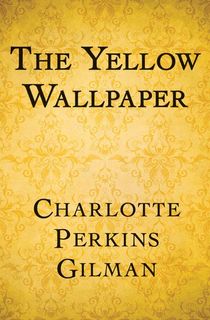With the release of the Barbie movie and the epic successes of Taylor Swift’s Eras Tour and Beyonce’s Renaissance World Tour, has 2023 been the year of the woman? Well, in short—yes.
But the rise of feminine power goes beyond just these monumental examples. In fact, this shift has been felt in even the darkest and creepiest reaches of media, within a genre that has historically exploited the pain of women: horror.
Women have always been a vital part of horror—Shirley Jackson and Mary Shelley, anyone? Plus, more and more incredible women are releasing captivating horror works each day. Considering women have always operated at the pulse of this genre, what’s the big change?
Works focusing on the issues that are important and central to women are finding their way to the forefront of genre conversations. With this rise in woman-centric scares, a new subgenre has been born: pink horror.
What is pink horror?
Heavily pioneered by the brilliant Wendy Dalrymple—author of such works as They Come From the Water, Don’t Read This or You Might Die, and more—the subgenre of pink horror is just starting to get legs under itself. Colorful descriptor aside, the subgenre is about more than aesthetics, though an apt rosy or bubblegum book cover never hurt anyone. Pink horror goes beyond a focus on women’s stories and acts as a direct response to misogyny.
In the words of Dalrymple herself, “Pink horror takes back all of the real-life horrors that we who identify as femme experience just living our everyday life and shoves it back in your face.”
This is a subgenre that celebrates intersectionality, acknowledging that there is no singular feminine experience. This is a subgenre that celebrates unlikeable and flawed female characters. Pink horror simultaneously rails against a society demanding that women conform and criticizes bad feminism.
To be clear, no one is saying that the concept of these ideals are at all new to horror. Women have always been writing these stories, they’re just often left in the dark. The subgenre of pink horror just aims to use a new umbrella to house these wonderful like-minded tales, making it easy for readers to find works to provide catharsis for the oppression wrought by the patriarchy.
As the formation of this subgenre is still relatively new, there doesn’t appear to be one set and cemented definition just yet. However, a couple things should be understood. First, if it insinuates anti-queer, anti-BIPOC, or anti-disabled values, it’s not pink horror. The subgenre doesn’t hold space for discrimination. Second, the stories can range from Gothic, slow-burning scares to gut-churning body horror. There are no limits as to how these stories are told, just a focus on the injustices faced by women.
From abusive relationships to the political interference in reproductive rights, there is no shortage of real-world horrors that women and femmes must stand against. These terrors may become metaphorical monsters, or they may co-exist with paranormal frights. Sometimes the stories are true to life itself, and admit that sometimes the worst villains are human.
The drawback to the pink horror subgenre is, of course, the associations that will inevitably be made with it. Pink is thought to be soft, and women’s fiction is often scoffed at and looked down on. But no one knows fear like women, and pink horror doesn’t shy away from the disgusting, horrifying, brutal, or obscene.
The characters featured may, at least on occasion, be girlish. They may try to redefine femininity. They may express their womanhood in a loud and unashamed way. But really, if anyone has issues with that, they’re probably contributing to exactly what pink horror is built to dismantle.
In one interview, Dalrymple specified that while much of pink horror is focused on the femme, the subgenre should be an inclusive space to “explore what ‘pink’ means to them regardless of gender.”
So, at the end of the day, it should be understood that the main purpose of pink horror is to challenge—challenge systems of oppression, challenge conceptions, and challenge the roles we’ve all become too comfortable in.
Want to read pink horror? Here are 13 great examples to start you off!

Girls' Night Out

The Yellow Wallpaper

Reluctant Immortals

Such a Pretty Smile

Mexican Gothic

The Dark Descent of Elizabeth Frankenstein

The Bloody Chamber

Bunny

Her Body and Other Parties

The Grace Year

The Lost Girls

The Natural Way of Things

Blood & Bone: An Anthology of Body Horror by Women & Non-Binary Writers
Featured image: Sincerely Media/Unsplash












